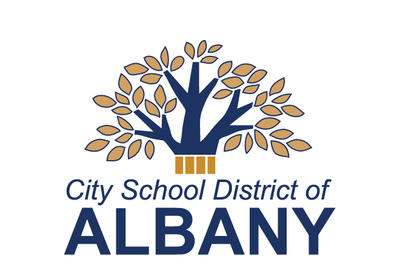
Grade 3 expectations
New York State learning standards outline what a student should know and be able to do by the end of the grade level. There are also additional skills that a well-rounded student should possess. Listed below are examples of academic expectations for third grade students. These should be viewed holistically and are not meant to determine promotion or retention; a student may demonstrate or be on track for proficiency without having mastered every skill. Teachers intervene as appropriate to support skills development.
- Read words with more than two syllables
- Know common prefixes (e.g., mis-, pre, re-) and suffixes (e.g., -ful, -ible, -ous)
- Read grade-level prose and poetry with accuracy appropriate rate and expression
- Locate relevant and specific details in a text to support an answer or inference
- Determine a text’s theme or main idea and how key details support these
- Understand text structures (e.g., compare/contrast, cause/effect, sequence)
- Retell stories, fables, folktales and myths; connect key details to central message
- Describe how characters contribute to the events in a story
- Distinguish personal point of view from that of the author or the characters
- Explain how illustrations or text features contribute to meaning (e.g., create mood, emphasize character or setting, etc.)
- Read and understand grade 3 literature and informational texts
- Follow established rules to engage effectively in a range of discussions
- Ask and answer questions about information from a speaker
- Recount key ideas and details from texts read aloud
- Speak in complete sentences as appropriate to situation
- Use context and word parts (prefix, suffix, root) to determine word meaning
- Distinguish the literal and nonliteral meanings of words (e.g., take steps)
- Use academic (e.g., determine) and subject specific words (e.g., chrysalis)
- Follow grade-appropriate conventions of English grammar and usage
- Use patterns, rules and generalizations to spell
- Use grade-appropriate punctuation
- (e.g., commas, apostrophes, quotations)
- Use linking (e.g., therefore, another) and temporal (e.g., before, after) words
- Write opinion pieces with reasons and a concluding statement
- Write informative pieces with a topic, facts and a concluding statement
- Write narratives using narrators, dialogue and descriptions
- Conduct short research projects
- Grade Level Fluencies: Multiply and divide within 100; add and subtract within 1,000
- Geometry
- Reason with shapes and their attributes
- Operations and Algebraic Thinking
- Represent and solve problems involving multiplication and division
- Understand of properties of multiplication and the relationship between multiplication and division
- Multiply and divide within 100
- Solve problems involving the four operations; explain arithmetic patterns
- Number and Operations in Base Ten
- Using knowledge of place value strategies and properties of operations; add and subtract within 1,000
- Use place value strategies to round numbers to 10 and 100
- Number and Operations (Fractions)
- Develop understanding of fractions as numbers
- Measurement and Data
- Solve problems involving measurement and estimation of intervals of time, liquid volumes and masses of objects
- Represent and interpret data
- Understand concepts of area; relate area to multiplication and addition
- Recognize perimeter as an attribute of plane figures; distinguish between linear and area measures
- Understand and apply scientific concepts related to Physical, Earth, and/or Life Science
- Use scientific equipment to take scientific measurements, including units
- Recognize that objects have properties that can be observed, described and/or measured (e.g., length, width, volume, size, etc.)
- Make measurements using nonstandard units and standard metric units
- Use inquiry to demonstrate understanding of the scientific process and concepts
- Begin to understand the concepts of global citizenship and human rights
- Examine the social organizations, traditions, languages, arts, religions, forms of government and economic systems in different communities
- Understand types of maps and map features such as scale, key, orientation and grid
- Identify how people adapt to and modify their environment to meet their needs
- Examine how cultures exchange and transfer ideas, beliefs, technologies and goods
- Make independent decisions guided by the elements/principles of art
- Develop technical skills and select materials/tools/media that serve creative intent
- Identify, discuss, create, interpret and reflect on and present artistic concepts connecting to a theme and/or various world cultures
- Maintain tone, pitch, rhythm, tempo and dynamics while singing
- Use instruments to createand perform music
- Explore, create, perform and describe musical terms and ideas such as melody, rhythm, harmony, form and style based on environment and resources provided from various world cultures
- Perform basic motor and manipulative skills and movement patterns
- Show competence in a variety of physical activities
- Demonstrate safe and responsible personal and social behavior
Keep your child engaged at home
The following are simple every day activities you can do at home and in the world to help support what your child is learning during the school day.
- Set aside daily time for reading. Children reading on grade level should select chapter books. Ask your student questions about the book they have chosen.
- Expect students to write daily using strategies they are learning in school.
- Practice sorting assigned spelling words into patterns (e.g., three letter blends: scr-, thr-)
- Practice analogies (farmer is to plow as doctor is to stethoscope).
- Practice basic math facts by posing problems to solve mentally; expect a quick response.
- Involve your student in tasks at home that require math like cooking, measuring, building, etc.
- Allow students to make mistakes and problem-solve better solutions.




